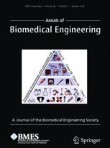
Abstract
Acute cerebral ischemic events and thrombosis are associated with the rupture/erosion of carotid atherosclerotic plaques. The aim of the present study was to determine the impact of calcification deposition on the wall shear stress (WSS) and stresses within the plaques using 3D fluid–structure interaction (FSI) models. Six patients with calcified carotid atherosclerosis underwent multisequence magnetic resonance imaging (MRI) and were divided into three groups according to the calcification volume. To evaluate the role of the calcification deposition on the stresses, the calcification content was replaced by lipids and arterial tissue, respectively. By comparing the results from the simulation with calcification, and when changing it to lipids there was a significant increment in the stresses at the fibrous cap (p = 0.004). Instead, by changing it to arterial tissue, there was no significant difference (p = 0.07). The calcification sha pes that presented the highest stresses were thin concave arc-shaped (AS1) and thin convex arc-shaped (AS3), with mean stress values of 107 ± 54.2 and 99.6 ± 23.4 kPa, respectively. It was also observed that, the calcification shape has more influence on the level of stress than its distance to the lumen. Higher WSS values were associated with the presence of calcification. Calcification shape plays an important role in producing high stresses in the plaque. This work further clarifies the impact of calcification on plaque vulnerability.



Δεν υπάρχουν σχόλια:
Δημοσίευση σχολίου
Σημείωση: Μόνο ένα μέλος αυτού του ιστολογίου μπορεί να αναρτήσει σχόλιο.